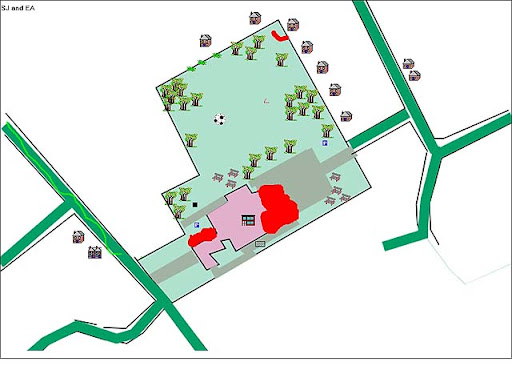
I've recently introduced the software mapping programme `Local Studies' to some pupils at Methodist J & I Primary School in Wakefield. I'm also currently delivering the primary ICT component on the Action Plan for Geography (APG) Curriculum Making Events and this work with children is providing me with very valuable learning experiences that I can share with teachers on the course.
Children are finding the software very easy to use and have produced some interesting maps to show how the school building and grounds are different to the aerial view & map that we viewed using Quikmaps.
For example the school building is now much longer than the view shown on Quikmaps because of the new nursery and offices on the North East end of the building. The idea that maps and aerial photographs can be inaccurate is useful learning for children as it enables us to talk about how they are only a record of a particular moment in time.
(Quikmaps uses Google Maps)
Local Studies is the only mapping programme that I know that integrates a drawing package with drag & drop symbols. This makes it a very useful piece of software and it can be used from Foundation Stage through to KS3.
However, teachers do find the different ways of saving the programme confusing at first as it can be saved as both a `project' and a `background map'.
Though the children have enjoyed using Local Studies we experienced real difficulties on our very first session as we couldn't save any of the work that the children produced. We asked the school ICT technician to find a way round our difficulties (this was linked to the way that the network is set up to save children's work into their individual folders). We now have a separate folder into which we can save their work.
This problem linked to saving to networks is one that other schools have experienced and I wonder if Soft Teach could help a little more by providing better advice about using this programme on school networks. [There is advice on the CD-Rom - but this did not solve our difficulty.] The programme has been around for some years now and I wonder if it is quite keeping up with changes in technology.





No comments:
Post a Comment